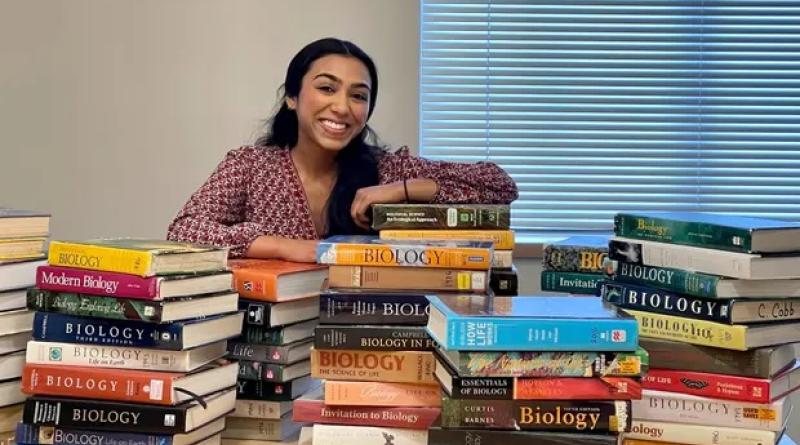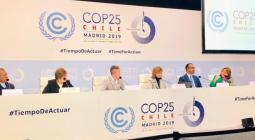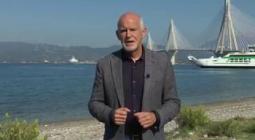US college biology textbooks failing to address climate crisis, study says

Coverage of climate crisis solutions is slim in textbooks, with many references moving to the back pages
US college-level biology textbooks miss the mark on offering solutions to the climate crisis, according to a new analysis of books over the last 50 years.
Fewer than three pages in a typical 1,000-page biology textbook from recent decades address climate change, according to the new study, despite experts warning it is humankind’s biggest problem.
While the coverage of the topic has expanded since the 1970s, and sentences focused on climate solutions peaked in the 1990s, that emphasis declined by 80% in recent decades.
The average coverage of climate change in biology textbooks from the past decade was 67 sentences, a step up from 51 sentences in the 2000s.
Researchers said that was not enough given the scale of the crisis.
“Climate change is affecting life all over the globe,” said Jennifer Landin, author of the study and an associate professor of biology at North Carolina State University. “And we are not covering it to nearly the degree it needs to be.”
The researchers analyzed a total of 57 US college biology textbooks published between 1970s to 2019 for the new study, published in the Public Library of Science journal, Plos One.
In that span, the placements of material about solutions to the climate crisis migrated further back in the books, from the last 15% to the last 2.5% of the pages.
“People tend to move through books from beginning to end,” Landin said, “and of course, everybody sort of runs out of time, so if you have something at the very end, the odds are that that’s going to be either covered quickly or not at all.”
In their analysis of sentences that cover solutions, national or international responsibility came up over four times that of individual or local solutions. No textbook mentioned actions related to dietary choices, with only eight books addressing transportation as means to lower greenhouse emissions.
“I was never really taught about climate change, maybe a day or two but nothing in depth,” said Rabiya Arif Ansari, co-author of the paper who started researching these textbooks in her second year of college. “A lot of my peers lacked information regarding climate change so I was very curious about how people are learning it.”
One of the possible reasons for the downward shift in solutions coverage that the paper points to might be stemming from textbook authors. In the 1990s, there were many authors focused on science education and science communication, while in recent decades the field saw an increase in the number of authors who specialize in cellular or molecular biology. Another possible reason that the paper discusses is the societal backlash against not only acceptance and action on climate change, but also conservation issues overall.
The researchers conclude that the proportion of biology textbooks that cover climate change solutions don’t reflect the severity of the problem. And such a trend is not unique to biology.
A 2019 study of top 11 best-selling introductory sociology textbooks show a similar pattern of relegating pages on environmental issues and climate toward the end of the books.
“What troubles me a lot is that sociology rarely talks about climate change,” says John Chung-En Liu, associate professor of sociology at National Taiwan University. “Which is very ironic because climate change is a problem of our society, especially social inequality, not to mention the justice dimension.”
Liu points to the role of the publication industry, with college textbooks known for not keeping up to date with the changes. Most textbooks are updated only every three or four years, with the structure remaining more or less the same.
“Very often textbooks are 10 years behind in terms of how the research has progressed,” Liu says.
He hopes to see an increase in page space devoted to the climate crisis, and shifting of that content from the end of the book to the center. Landin notes that biology textbooks tend to go from small-scale to large-scale, with the environmental issues and ecology appearing only in the end.
“I think that students learn best when we start from what they know and then expand into the unknown,” Landin says, proposing the reversal of the order from large-scale organisms to small-scale topics of cellular and molecular biology.
Another issue is that traditional textbook use is declining, which Landin views as an opportunity to look at what comes next and what needs to be emphasized to better help students.
cover photo: Rabiya Arif Ansari, an undergraduate student at NCSU, spent her pandemic years studying climate change content in 50 years of biology textbooks with her mentor, Jennifer Landin. Photograph: Rabiya Arif Ansari, handout





